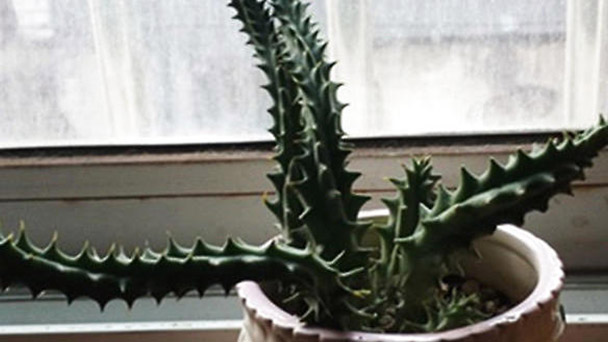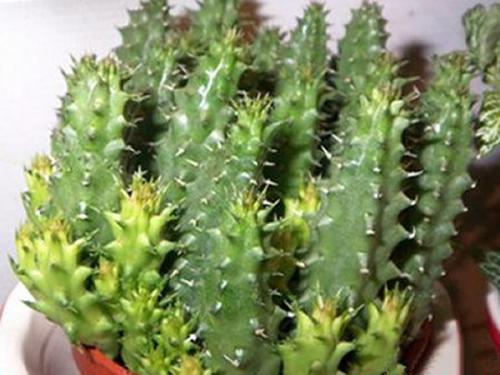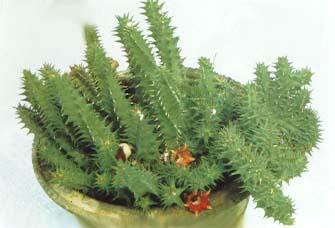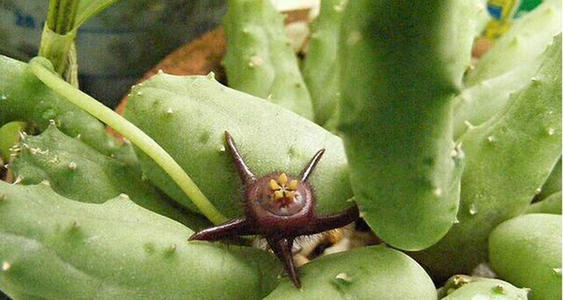Duvalia elegans profile
Written by Maggie
Mar 16 2021

Duvalia elegans is a native of southern Africa and prefers a warm, dry and sunny environment. Duvalia elegans is not cold-resistant, afraid of high temperature, not wet but drought resistant. With fertile, well-drained sandy loam as well. The temperature in winter is not lower than 5℃.
Duvalia elegans picture

Morphological characteristics of Duvalia elegans
Duvalia elegans is a small and dainty plant with fleshy stems and irregularly dentate edges.
Duvalia elegans is a solitary plant, spherical to tubular, 30-35 cm in diameter, 70-80 cm in height, dark green in body color, with high verrucous edges on the upper ridge of the eye. Stellar arrangement balance, yellow and white peripheral thorns 9-11; There are 5 reddish-brown spines, one of which is wide and flat with a hook at the tip.
Duvalia elegans terminal yellow bell flowers with purple stripes in spring, 5 -- 5.5 cm in diameter.
Ecological habits of Duvalia elegans
Duvalia elegans like warm, dry and sunny environments, not cold, afraid of high temperature, not wet but drought tolerance.
Duvalia elegans prefers fertile, well-drained sandy loam soils with winter temperatures not lower than 5 ° C.
Cultivation of Duvalia elegans
Duvalia elegans does not need to be watered too much, especially during the summer and winter dormant periods.
If illumination is insufficient, air humidity is big and meets high temperature or low temperature, adverse to growth, the base of the stem is extremely easy to rot. When part of the stem yellow-green rot phenomenon, should be timely cut off the rotten stem segment, after a little dry cutting.
Duvalia elegans grow in sufficient sunshine, keep a little dry as well, high temperature in midsummer shade and ventilation, every 2 years need to change the basin 1 time.
Propagation of Duvalia elegans
Duvalia elegans is propagated by ramets and cuttings.
Division
Duvalia elegans is carried out in the spring when the pot is changed in spring. The plants that grow too densely are separated and planted. Because the root system is small and shallow, it is not suitable to water more after planting.
Cuttings
Choose solid, short and thick stem of duvalia elegans as cuttings. The cuttings should not be too large. Insert into sand bed after slightly drying, and root for 10-15 days after insertion.

Disease control of Duvalia elegans
Common black spot and stem rot hazard of Duvalia elegans can be sprayed with 75% chlorothalonil WP 800 times liquid.
Duvalia elegans insect pest with mealworms damage, with 10% deinsectivating essence emulsion 3000 times spray kill.
The distribution area of Duvalia elegans
Duvalia elegans is a native of southern Africa.
Uses of Duvalia elegans
Ornamental value
Duvalia elegans is a small and dainty plant with fleshy stems and irregularly dentate edges. Small bell-shaped purple flowers grow from the base of the stem in spring. They are very chic.
Potted role
Duvalia Elegans is often used as a potted ornamental for balconies, windowsills and desks.

Latest Updated
- Benefits of Bugleweed - 7 Science-backed Health Benefits
- Bugleweed Dangers & Side Effects - Is It Poisonous?
- How to Plant Evergreen Trees - What You Should Know
- When to Plant Evergreens - Grow Guide for Evergreen Trees
- 12 Wonderful Evergreen Shrubs for Your Garden
- 12 Popular Evergreen Plants with Pictures for Beginners
- When And How To Prune A Lilac Bush Like a Pro
- How to Grow & Care for Lilac Vine (Hardenbergia Violacea)
- Japanese Lilac Tree (Syringa Reticulata) Care & Propagation Guide
- Shumard Oak Pros and Cons - What to Know
Popular Articles
- Winter maintenance of Antirrhinum Majus
- How to Grow Terminalia Mantaly Tree
- How to Grow and Care for Crossostephium Chinense
- How to grow Antirrhinum Majus in spring
- Peristeria Elata (Dove Orchid) Profile: Info & Care Guide
- Underwatered Snake Plant (Sansevieria Trifasciata) - Signs And How To Fix
- How to Care for Brazilian Jasmine Plant (Mandevilla Sanderi)
- How to Grow & Care for Graptopetalum Purple Delight in Summer
- Rosa Chinensis (China Rose): Plant Growing & Care Tips
- How to Care for Baby Sun Rose (Aptenia Cordifolia)